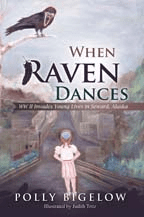Navigating the complexities of storytelling often leads one to daunting impasses. The journey starts with enthusiasm, only to find the plot thinning, much like autumn’s last leaves clinging desperately to their branches, hinting at the impending barrenness of winter. It’s a familiar scene for many writers, the initial burst of creativity giving way to a dreaded stall. The story, which once thrummed with life, now seems to draw to a close within mere chapters, or worse, leaves characters stranded in a narrative cul-de-sac.
Such moments of dismay are not uncommon. The writer finds themselves at a standstill, the plot unable to sustain itself, like an engine sputtering without fuel. This is where many stories falter, either wrapping up too soon or getting stuck in the middle, with characters wandering aimlessly without direction.
A Writer’s Dilemma
Imagine sitting down to write, the excitement palpable, the words flowing effortlessly at first. Yet, as the middle of the book approaches, the enthusiasm wanes. The plot that once seemed rich and full now feels thin and insubstantial. The characters, so vibrant in the beginning, now lack purpose. The narrative energy dissipates, leaving a sense of unease and frustration. The once-clear path of the story now seems obscured by a dense fog of uncertainty.
The Fix: Planning and Outlining
This is where careful planning can save countless hours of frustration. A structured approach, such as creating a detailed 30-page outline of your novel, can transform your writing process. You create a roadmap that guides you through the murky middle of your story by outlining each chapter, focusing on conflict, character development, and unexpected twists.
Think of an outline as a trellis in a garden. Just as a trellis supports the growth of climbing plants, an outline supports the growth of your narrative. It provides a framework upon which the vine of your story can flourish, ensuring that the plot remains robust and the characters’ journeys remain engaging.
Tending to Your Narrative Garden
To diligently tend to your narrative garden, begin with the end in mind. Visualize the climax of your story and work backward, identifying key milestones and conflicts that will lead your characters to that ultimate moment. Consider subplots that can enrich the main narrative, adding depth and complexity to your story. These subplots are like the branches of a tree, supporting the main trunk and creating a fuller, richer experience for the reader.
Additionally, focus on the sensory richness of the environment in which your story unfolds. Engage the reader’s senses with vivid descriptions that bring the setting to life. The authenticity of human interactions within this setting adds another layer of depth as characters respond to their environment and each other in real and relatable ways.
Balancing Description and Action
A rhythm that balances description with action and reflection with momentum keeps the reader engaged. Vivid imagery should not overwhelm the pace of the story but should complement it, enhancing the narrative without slowing it down. This balance invites the reader to engage deeply with the events and their implications, creating a more immersive and compelling reading experience.
Embracing Subtle Humor and Irony
Integrating subtle humor and irony can add another dimension to your storytelling. These elements can lighten the mood when necessary, providing a contrast to more intense moments and keeping the reader emotionally invested. Humor can reveal character traits and relationships in a way that is both entertaining and enlightening.
Conclusion
Remember, every great story deserves to be told in its full glory. Your vision can become a compelling reality with the right tools and guidance. By planning meticulously and tending to your narrative garden with care, you can confidently navigate the complexities of storytelling. The journey, though challenging, is also immensely rewarding, leading to the creation of a story that resonates deeply with readers.
In essence, the art of storytelling is much like cultivating a garden. With careful planning, attention to detail, and a balance of description and action, a writer can overcome the common pitfalls that lead to narrative stagnation. By embracing these techniques, any writer can turn their vision into a vivid, compelling reality.
We Don’t Want to Write the Laws; We Want to Publish the Books
We Believe in the Power of Authors Short Video: https://bit.ly/45z6mvf
Writers Reshape the World Short Video: https://bit.ly/47glKOg
Bringing Your Book to Market Booklet: https://bit.ly/2ymDVXx
Bringing Your Book to Market Short Video: https://bit.ly/3Q3g2JD




 This is Publication Consultants’ motivation for constantly striving to assist authors sell and market their books. Author Campaign Method (ACM) of sales and marketing is Publication Consultants’ plan to accomplish this so that our authors’ books have a reasonable opportunity for success. We know the difference between motion and direction. ACM is direction! ACM is the process for authorpreneurs who are serious about bringing their books to market. ACM is a boon for them.
This is Publication Consultants’ motivation for constantly striving to assist authors sell and market their books. Author Campaign Method (ACM) of sales and marketing is Publication Consultants’ plan to accomplish this so that our authors’ books have a reasonable opportunity for success. We know the difference between motion and direction. ACM is direction! ACM is the process for authorpreneurs who are serious about bringing their books to market. ACM is a boon for them. Release Party
Release Party Web Presence
Web Presence Book Signings
Book Signings Facebook Profile and Facebook Page
Facebook Profile and Facebook Page Active Social Media Participation
Active Social Media Participation Ebook Cards
Ebook Cards The Great Alaska Book Fair: October 8, 2016
The Great Alaska Book Fair: October 8, 2016


 Costco Book Signings
Costco Book Signings eBook Cards
eBook Cards

 Benjamin Franklin Award
Benjamin Franklin Award Jim Misko Book Signing at Barnes and Noble
Jim Misko Book Signing at Barnes and Noble
 Cortex is for serious authors and will probably not be of interest to hobbyists. We recorded our Cortex training and information meeting. If you’re a serious author, and did not attend the meeting, and would like to review the training information, kindly let us know. Authors are required to have a Facebook author page to use Cortex.
Cortex is for serious authors and will probably not be of interest to hobbyists. We recorded our Cortex training and information meeting. If you’re a serious author, and did not attend the meeting, and would like to review the training information, kindly let us know. Authors are required to have a Facebook author page to use Cortex. Correction:
Correction: This is Publication Consultants’ motivation for constantly striving to assist authors sell and market their books. ACM is Publication Consultants’ plan to accomplish this so that our authors’ books have a reasonable opportunity for success. We know the difference between motion and direction. ACM is direction! ACM is the process for authors who are serious about bringing their books to market. ACM is a boon for serious authors, but a burden for hobbyist. We don’t recommend ACM for hobbyists.
This is Publication Consultants’ motivation for constantly striving to assist authors sell and market their books. ACM is Publication Consultants’ plan to accomplish this so that our authors’ books have a reasonable opportunity for success. We know the difference between motion and direction. ACM is direction! ACM is the process for authors who are serious about bringing their books to market. ACM is a boon for serious authors, but a burden for hobbyist. We don’t recommend ACM for hobbyists.

 We’re the only publisher we know of that provides authors with book signing opportunities. Book signing are appropriate for hobbyist and essential for serious authors. To schedule a book signing kindly go to our website, <
We’re the only publisher we know of that provides authors with book signing opportunities. Book signing are appropriate for hobbyist and essential for serious authors. To schedule a book signing kindly go to our website, < We hear authors complain about all the personal stuff on Facebook. Most of these complaints are because the author doesn’t understand the difference difference between a Facebook profile and a Facebook page. Simply put, a profile is for personal things for friends and family; a page is for business. If your book is just a hobby, then it’s fine to have only a Facebook profile and make your posts for friends and family; however, if you’re serious about your writing, and it’s a business with you, or you want it to be business, then you need a Facebook page as an author. It’s simple to tell if it’s a page or a profile. A profile shows how many friends and a page shows how many likes. Here’s a link <> to a straight forward description on how to set up your author Facebook page.
We hear authors complain about all the personal stuff on Facebook. Most of these complaints are because the author doesn’t understand the difference difference between a Facebook profile and a Facebook page. Simply put, a profile is for personal things for friends and family; a page is for business. If your book is just a hobby, then it’s fine to have only a Facebook profile and make your posts for friends and family; however, if you’re serious about your writing, and it’s a business with you, or you want it to be business, then you need a Facebook page as an author. It’s simple to tell if it’s a page or a profile. A profile shows how many friends and a page shows how many likes. Here’s a link <> to a straight forward description on how to set up your author Facebook page.



 Mosquito Books has a new location in the Anchorage international airport and is available for signings with 21 days notice. Jim Misko had a signing there yesterday. His signing report included these words, “Had the best day ever at the airport . . ..”
Mosquito Books has a new location in the Anchorage international airport and is available for signings with 21 days notice. Jim Misko had a signing there yesterday. His signing report included these words, “Had the best day ever at the airport . . ..”



 The Lyin Kings: The Wannabe World Leaders
The Lyin Kings: The Wannabe World Leaders
 Time and Tide
Time and Tide


 ReadAlaska 2014
ReadAlaska 2014 Readerlink and Book Signings
Readerlink and Book Signings
 2014 Independent Publisher Book Awards Results
2014 Independent Publisher Book Awards Results

 Bonnye Matthews Radio Interview
Bonnye Matthews Radio Interview
 Rick Mystrom Radio Interview
Rick Mystrom Radio Interview When he published those overseas blogs as the book The Innocents Abroad, it would become a hit. But you couldn’t find it in bookstores.
When he published those overseas blogs as the book The Innocents Abroad, it would become a hit. But you couldn’t find it in bookstores. More NetGalley
More NetGalley Mary Ann Poll
Mary Ann Poll
 Bumppo
Bumppo
 Computer Spell Checkers
Computer Spell Checkers Seven Things I Learned From a Foreign Email
Seven Things I Learned From a Foreign Email 2014 Spirit of Youth Awards
2014 Spirit of Youth Awards Book Signings
Book Signings


 Blog Talk Radio
Blog Talk Radio Publication Consultants Blog
Publication Consultants Blog Book Signings
Book Signings



 Don and Lanna Langdok
Don and Lanna Langdok Ron Walden
Ron Walden Book Signings Are Fun
Book Signings Are Fun Release Party Video
Release Party Video
 Erin’s book,
Erin’s book,  Heather’s book,
Heather’s book,  New Books
New Books